On Friday, Staff Writer Manny Gonzalez attended a semesterly tour of the Metropolitan Museum of Art based around the Literature Humanities syllabus; the event is offered by Columbia’s Department of Art History.
Each semester, members of the Art History department at Columbia host tours of the Metropolitan Museum of Art built around the Lit Hum syllabus. However, with such a broad syllabus, what type of art did I really see? Well, despite the large span of the syllabus, especially with new contemporary additions such as Father Comes Home From The Wars by Suzan-Lori Parks, the tour focused solely on art from both ancient Greece and Rome. My tour guide was the lovely Dr. Xiaohan Du, a very knowledgeable art history professor here at Columbia, and here are a few of the pieces she spoke on…
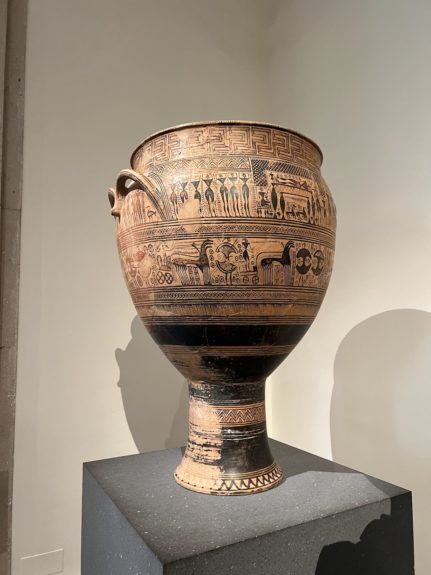
This vase is from the eighth-century BCE. If you look closely, you can see that this vase was meant for a burial: it not only has depictions of war on it, but also, presumably, the way in which the person being buried had died. As seen in many of the Greek works in Lit Hum, being buried after you died was a very big part of Greek culture; it was a crucial element in order to continue to the afterlife. And, in this way, the art corresponds to the literary works. Dr. Du also made sure to point out the geometric nature of early Greek art, which will come in handy when considering further comparisons in this article.
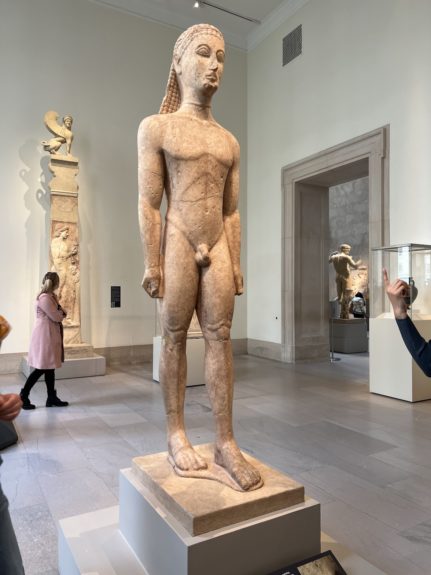
This is a very early sixth-century BCE statue. Along with the geometric nature of the previous pot, this statue is poised in an extremely rigid, geometric stance. Dr. Du said that as time passed, artists began to better understand the anatomy of humans, which aided in building more realistic statues in the future; this statue, however, was constructed too early in time to benefit from such knowledge. Besides that, the statue, a tomb marker, is presumably meant to portray a Spartan soldier. It has a perfect resting face, nondescript characteristics, and a powerful physique, all idealized traits of the noble Athenian aristocratic youth at the time that this was made. It is clear that this focus on such traits yields to Greek ideals of such a time; archetypes did indeed exist back then.
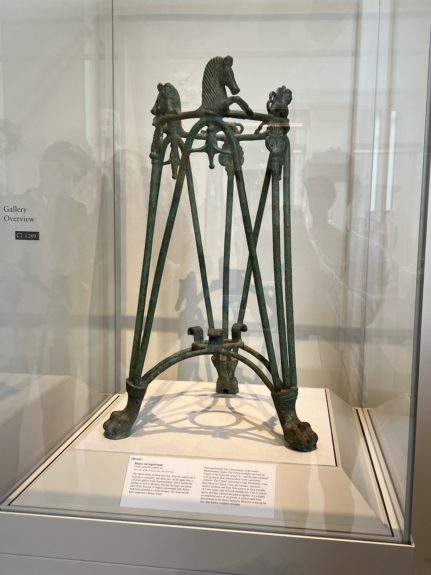
This early sixth-century BCE tripod, as the Greeks called it, would have been worth a fortune in its own time. Not only because of its intricate design: detailed horses on the top were no doubt produced via advanced-level metallurgy, but because of the material itself, copper. If it was not melted down to be used for the creation of swords, shields, or armor, the tripod would have been melted down to create coins. According to Dr. Du, it truly is a miracle that such a large tripod exists to this day. And, returning to the focus of art on warfare as seen in the first vase, horses were also seen as essential to warfare; they were the tanks of ancient Greece. This rare piece is truly astonishing, both in its existence and beauty.
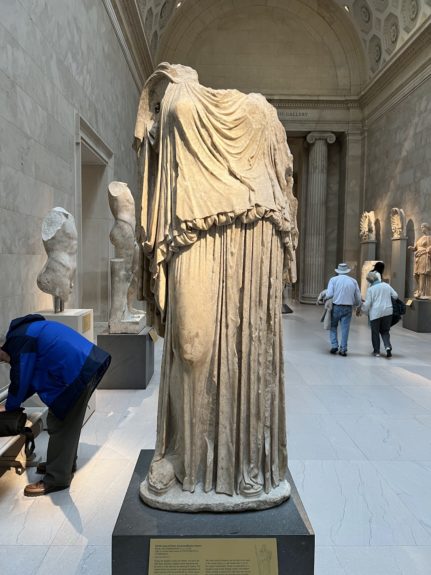
This statue is a 14-68 AD Roman copy of a 375-359 BCE ancient Greek statue. In comparison with the other one I’ve included, this statue yields stark differences. For one, this statue is extremely realistic: it has a prominent contra postal pose, intricate folds on the robe, and overall elegance. Specifically, this elegance is noticed when looking at her feet; her feet are not flat as her pinky toe is raised up. The statue possesses such intricate detail. Dr. Du described this as the personification of peace as the woman is not eroticized, even though it was somewhat common to do so, but dignified. It is now, as I mentioned previously, during the classic era that we see the artistic understanding of anatomy blossom. This further context is why the statue looks so real.
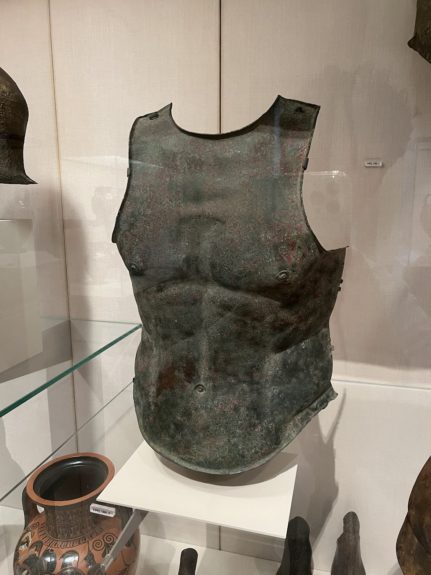
This piece of armor, and those like it, dates to around the fourth, fifth, and sixth centuries BCE. As is evident, it is very human-like: containing specific details of the male abdomen, nipples, six-pack, and navel. It is so interesting that flesh would be carved into something supposed to shield against an attack on said flesh; it’s supposed to protect the flesh, not resemble it. Dr. Du noted that it’s almost as if identity is carved into each part of the armor: this forms a strong connection to the scene of Patroclus donning Achilles’s armor and pretending to be him, where he is successful. Like the tripod, it is a miracle that this had not been melted down for the creation of coins, other armor, swords, or shields. And, like the geometric statue, it is clear that archetypes and ideals are still present in Greek society, but in this case, it deals with the male body.
While these five pieces of art are only a small fraction of what was shown to me on the tour, I hope the descriptions and pictures have sparked your interest. Go to the Met! And, maybe, go on one of these tours! They are great!
Lastly, a very special thanks to Dr. Du for the wonderful tour.
The Met via Pexels


 0 Comments
0 Comments